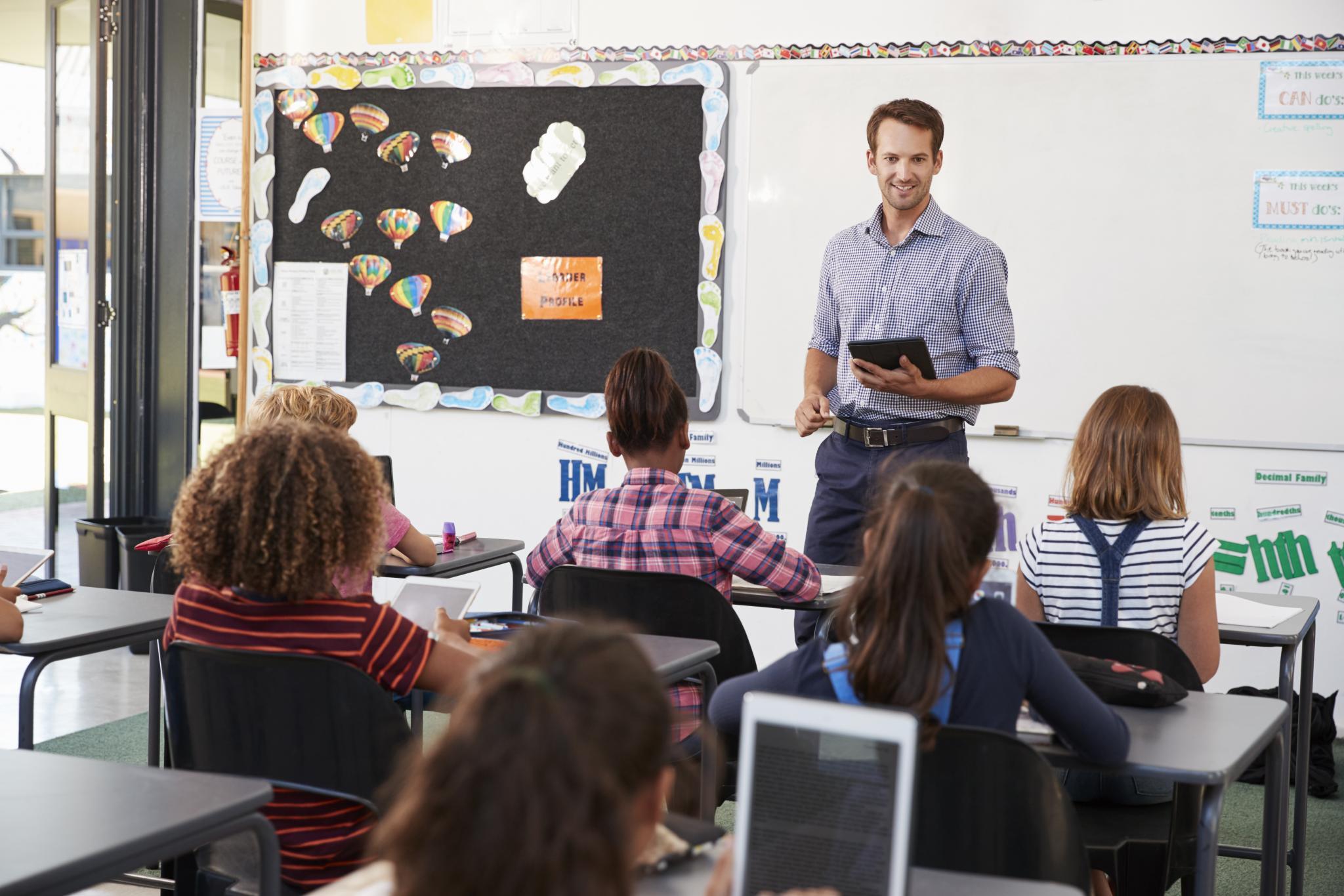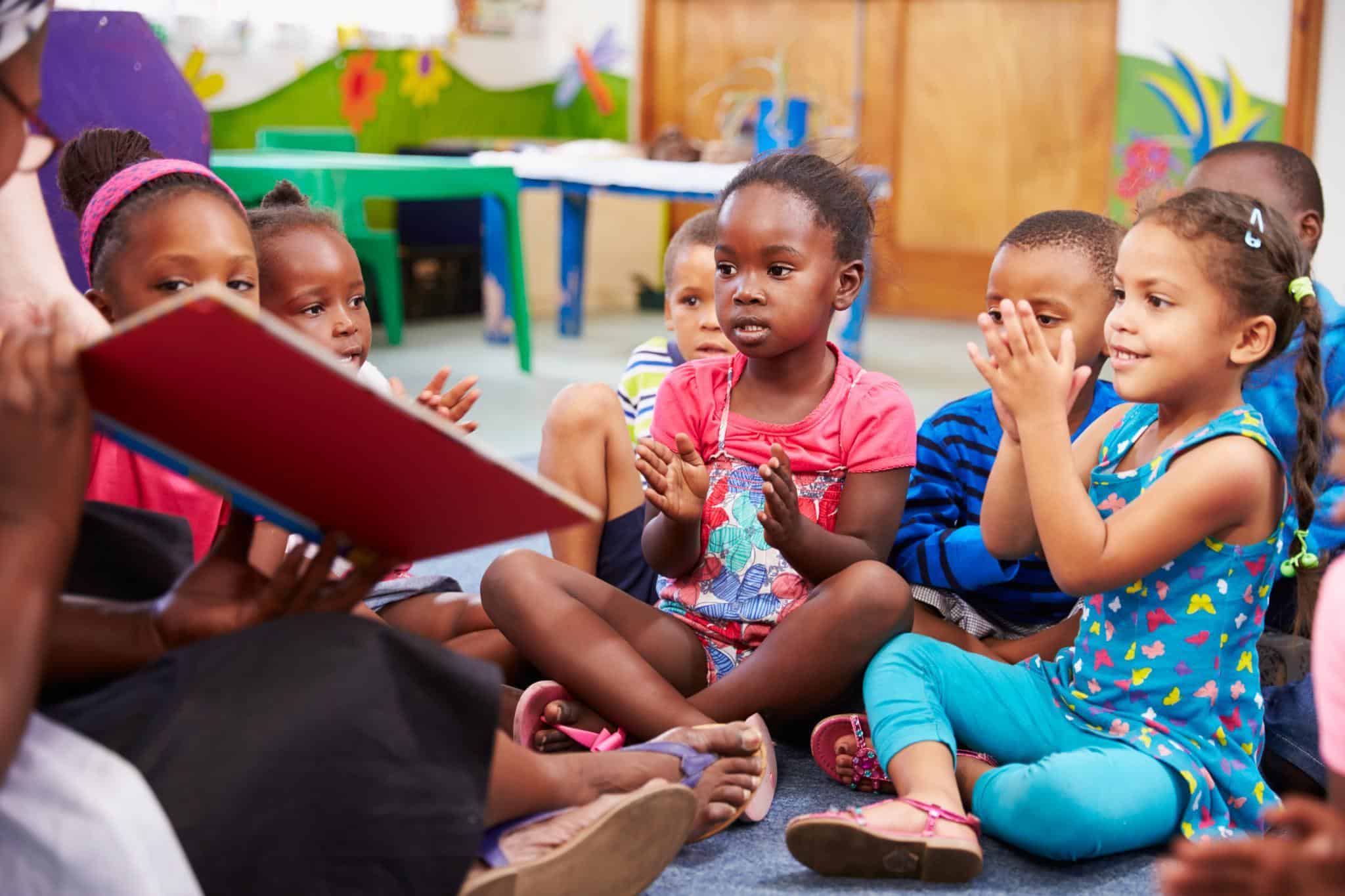One of the most important challenges that educators face is how to teach early or struggling students literacy skills. While students meet academic milestones at different paces, incorporating certain strategies in your classroom can help you prepare as many students as possible for reading readiness. And recent developments in reading curriculum suggest that multisensory learning is one of the most effective methods for doing so.
Multisensory activities are based in whole brain learning, which is the belief that the best way to teach concepts is by involving multiple areas in the brain. By adding auditory or visual components to reading assignments, like illustrations or online activities, you can help students develop stronger literacy skills. Multisensory reading strategies also tie into more established educational methods, particularly Gardner’s theory of multiple intelligences, which is explained further below.
Interested in using multisensory learning to help students in your classroom develop stronger reading skills? Discover the science behind whole brain learning and how you can incorporate multisensory activities into your school curriculum.
Which Reading Skills Should Students Learn in Early Elementary?
Before students even enter elementary school, they’re already learning skills that will lead to reading readiness later on. These foundational reading skills like print or letter recognition will prepare them to develop literacy as early as kindergarten or first grade. The earlier that essential reading strategies for elementary studies are introduced into their curriculum, the stronger their long-term reading skills will become later on.[1]
Reading and pre-reading skills that are connected with early literacy development include:[2]
- Phonological and phonemic awareness
- Vocabulary
- Reading comprehension
- Print recognition
- Alphabetical recognition and decoding
Alphabetical decoding in particular is a key skill for developing reading fluency in early elementary.[3] This skill refers to the knowledge and application of letter-sound relationships, which helps students learn to recognize and sound out different words. Without the ability to translate letters into sounds, students cannot develop more advanced skills later on.
Multisensory Learning: What It Is and Why It Works
 To understand why multisensory learning is one of the most effective student engagement strategies, it’s important to understand how our minds work. The human brain has evolved to learn and grow in a multisensory environment.[4] According to the whole brain learning theory, all brain functions are interconnected for this reason.[5] We remember how to do things best when the directions we’re given engage multiple senses.
To understand why multisensory learning is one of the most effective student engagement strategies, it’s important to understand how our minds work. The human brain has evolved to learn and grow in a multisensory environment.[4] According to the whole brain learning theory, all brain functions are interconnected for this reason.[5] We remember how to do things best when the directions we’re given engage multiple senses.
The definition of multisensory learning, then, is using the neuroscience behind how we learn to teach lessons that engage two or more senses. Most educators add audio or visual multimedia into their assignments, but multisensory learning can also include tactile, smell, and taste-related materials.[6] As long as the activity engages multiple areas of the brain, it can help students develop stronger memories around how to do it.
You could, for example, have students form alphabet letters out of clay or hand out chocolate Easter eggs while learning springtime vocabulary words.[7] As long as the sensory materials are in some way related to the subject being taught, they can help students learn important concepts. Many students rely on some senses more than others so varying your multisensory activities can help you make sure you reach all children in your classroom.
Literacy in particular is an inherently multisensory skill that benefits from differentiated reading instruction. This is because reading involves both recognizing written words and translating them into their corresponding letter sounds.[8] For struggling students or those with reading disabilities, particularly dyslexia, multisensory learning can help them learn to use all of their senses while reading a book and rely on their strengths.[9] Whether using it for classroom instruction or remedial assignments, multisensory learning can help all students develop or strengthen their literacy skills.
Educational Research Proves Multisensory Instruction Strengthens Reading Skill
The benefits of multisensory learning have been verified by contemporary research in cognitive science. A 2018 study using fMRI technology, which measures brain activity by detecting changes in blood flow, found that children with the strongest literacy skills had more interactivity between different regions in their brain.[10] This suggests that reading is a whole-brain skill and that future developments in literacy instruction should use a multisensory approach.
 One emergent literacy skill that multisensory learning can help teach is connecting print letters with the oral alphabet. Educational researchers have found that multisensory activities can teach students to associate letters or words with sounds faster.[11] As mentioned earlier, this is one of the foundational reading skills that, if you can nurture in young students, can promote strong emergent literacy. Using multimedia activities to engage students is a great way to help students reach their reading potential.
One emergent literacy skill that multisensory learning can help teach is connecting print letters with the oral alphabet. Educational researchers have found that multisensory activities can teach students to associate letters or words with sounds faster.[11] As mentioned earlier, this is one of the foundational reading skills that, if you can nurture in young students, can promote strong emergent literacy. Using multimedia activities to engage students is a great way to help students reach their reading potential.
For older grades, multisensory activities can also help teach more complex reading skills like critical thinking or advanced reading comprehension.[12] You could, for example, take turns reading pages from a novel or textbook aloud as a class to engage their auditory and visual senses. Even little activities that involve multiple senses can teach students to use their entire brain while reading or writing.
What this research points to most of all is that there isn’t a “one size fits all” method of teaching literacy. Different students respond to different activities, and the best way to reach all of your students is through multisensory learning. Pay attention to what is or isn’t working for your students, and try to find an activity that clicks for struggling readers.[13] With practice and the right strategy, any student’s reading skills can improve.
How Multisensory Learning Connects with the Multiple Intelligences Theory
The strategies behind multisensory learning are supported by decades of research, particularly Gardner’s theory of multiple intelligences. This theory, which was developed by Harvard professor Dr. Howard Gardner, states that the traditional notions of learning and intelligence are too limited. Gardner proposes that people can have proficiencies in different kinds of intelligences, and that teaching students in a way that matches their intellectual strengths can help them grasp tough subjects.
Children as young as four- or five-years-old have already developed strengths and weaknesses corresponding to Gardner’s intelligences.[14] These eight intelligences as defined by Dr. Gardner include:[15]
- Linguistic intelligence: the ability to understand, read, and write words
- Logical-mathematical intelligence: the ability to think conceptually and solve abstract problems
- Spatial intelligence: the ability to visualize in thought and analyze images
- Musical intelligence: the ability to understand and manipulate pitch, rhythm, and timbre
- Bodily-kinesthetic intelligence: the ability to control your body movements or objects in your grasp
- Naturalistic intelligence: the ability to recognize and care for plants and animals
- Interpersonal intelligence: the ability to understand and care for the needs of others
- Intrapersonal intelligence: the ability to analyze your own thoughts, feelings, and beliefs
Building Multisensory Learning Skills in the Classroom
When teaching reading strategies and other academic skills, schools rely heavily on linguistic and logical-mathematical intelligences.[16] But reading strategies for struggling readers or young students can be more effective if you incorporate some of their strengths. Teachers who use several different types of intelligence strategies to teach academic skills often notice that their students understand concepts better and retain more knowledge down the road.[17]
To use multiple intelligences in the classroom, try linking your lesson plans to at least two different types of intelligences and sensory strategies. You could, for example, teach your students a song about the alphabet. Not only would this pair musical and linguistic intelligences, but it would also engage your students’ auditory and visual senses while learning about letters. Making the most of multisensory learning and the multiple intelligences theory is a great way to help all of your students learn in a way that plays to their strengths.
How to Boost Student Engagement with Multisensory Reading Activities
Using multisensory activities to teach reading skills can help engage students in your lessons, particularly if you’re teaching struggling or reluctant readers.[18] Depending on the student, you can try a variety of fun reading activities that involve multiple senses.
Try these five reading strategies to teach literacy skills with the best elements of whole brain learning:
- When reading a book as a class, try putting on an audio recording or watching a clip of a storyteller performing it [19]
- Have students build vocabulary words using letter magnets as a tactile activity [20]
- Instead of always assigning students print books to take home, try giving audiobook or video assignments as well [21]
- Have students make their own illustrations to accompany vocabulary words or simple sentences that they write
- Teach students to sound out words while pointing at each letter to solidify a link between sounds and print letters [22]
Sources:
The Libra Foundation. Why is Early Literacy Important? Retrieved from raisingreaders.org: https://www.raisingreaders.org/understanding-early-literacy/why-is-early-literacy-important/.[1]
The American Institutes for Research. Learning to Read with Multimedia Materials. Retrieved from ctdinstitute.org: https://www.ctdinstitute.org/sites/default/files/file_attachments/CITEd%20-%20Learning%20to%20Read%20with%20Multimedia%20Materials%20FINAL.pdf.[2]
Blomert, L., and Froyen, D. Multi-sensory learning and learning to read. International Journal of Psychophysiology, 77(3), September 2010, pp. 195-204.[3]
Shams, L., and Seitz, A.R. Benefits of multisensory learning. Trends in Cognitive Sciences, 60, November 2008, pp. 411-17.[4]
Başar, E. The theory of the whole-brain-work. International Journal of Psychophysiology, 60, March 2006, pp. 133-38.[5]
Minnesota Literacy Council. Multisensory Activities to Teach Reading Skills. Retrieved from mnliteracy.org: https://mnliteracy.org/sites/default/files/multisensory_techniques_to_teach_reading_skills.pdf.[6]
Ibid.[7]
Blomert, L., and Froyen, D. Multi-sensory learning and learning to read. International Journal of Psychophysiology, 77(3), September 2010, pp. 195-204.[8]
International Dyslexia Association. Multisensory Structured Language Teaching Fact Sheet. Retrieved from dyslexiaida.org: https://dyslexiaida.org/multisensory-structured-language-teaching-fact-sheet/.[9]
Smith, G.J., Booth, J.R., and McNorgan, C. Longitudinal Task-Related Functional Connectivity Changes Predict Reading Development. Frontiers in Psychology, 60, September 2018.[10]
The American Institutes for Research. Learning to Read with Multimedia Materials. Retrieved from ctdinstitute.org: https://www.ctdinstitute.org/sites/default/files/file_attachments/CITEd%20-%20Learning%20to%20Read%20with%20Multimedia%20Materials%20FINAL.pdf.[11]
Ibid.[12]
Minnesota Literacy Council. Multisensory Activities to Teach Reading Skills. Retrieved from mnliteracy.org: https://mnliteracy.org/sites/default/files/multisensory_techniques_to_teach_reading_skills.pdf.[13]
Gardner, H., and Hatch, T. Educational Implications of the Theory of Multiple Intelligences. Educational Reader, 8(8), November 1989, pp. 4-10.[14]
Davis, K., Christodoulou, J., Seider, S., & Gardner, H. The theory of multiple intelligences. In R.J. Sternberg & S.B. Kaufman, Cambridge Handbook of Intelligence, 2011, pp. 485-503.[15]
Ibid.[16]
Ozdemir, P., Guneysu, S., and Tekkaya, C. Enhancing Learning through Multiple Intelligences. Journal of Biological Education, 2006, 40(2), pp. 74-78.[17]
The American Institutes for Research. Learning to Read with Multimedia Materials. Retrieved from ctdinstitute.org: https://www.ctdinstitute.org/sites/default/files/file_attachments/CITEd%20-%20Learning%20to%20Read%20with%20Multimedia%20Materials%20FINAL.pdf.[18]
Shams, L., and Seitz, A.R. Benefits of multisensory learning. Trends in Cognitive Sciences, 60, November 2008, pp. 411-17.[19]
Minnesota Literacy Council. Multisensory Activities to Teach Reading Skills. Retrieved from mnliteracy.org: https://mnliteracy.org/sites/default/files/multisensory_techniques_to_teach_reading_skills.pdf.[20]
Shams, L., and Seitz, A.R. Benefits of multisensory learning. Trends in Cognitive Sciences, 60, November 2008, pp. 411-17.[20]
Ibid.[21]
Center For Effective Reading Instructions and International Dyslexia Association. Phonics Instruction: the Value of a Multi-sensory Approach. Retrieved from readingrockets.org: http://www.readingrockets.org/article/phonics-instruction-value-multi-sensory-approach.[22]

